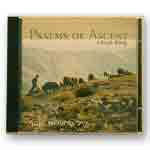|
Lessons from the Trees
The Story of Honi
“When the Lord returned the exiles to Zion, we were like those who dreamed…” This beautiful verse from Psalm 126 is called a Song of Ascent. It describes how after 70 years in exile following the destruction of the First Temple, the Jews were permitted to return to Jerusalem and build the Second Temple.
An old Jewish legend about Psalm 126 tells the story of a man named Honi who asked the question, “How can someone sleep and dream for 70 years?” He wanted to rejoice in the Psalm’s message of joy and thanks to God for returning His People to Jerusalem. However, this question perplexed him for many years.
One day Honi was traveling along a road when he saw a man planting a carob tree. Honi stopped and watched the man for some time then asked, “How long before this tree can bear fruit?”
The man replied, “Seventy years.”
Honi then asked the man, “Do you think you will be alive in seventy years to eat the fruit of the tree you are planting?”
The man stopped, thought, and then answered, “Probably not. However, when I was born into this world there were already many carob trees. They were planted by my father and my grandfather. Just as they planted trees for me, I am planting trees for my children and my grandchildren to enjoy and eat the fruit.”
The lesson of Honi is when we plant a tree, it is not so much for us, but for the sake of future generations.
During the seventy years the carob tree will take to bear fruit many things happen: roots will dig into the earth, branches will stretch upwards to the sky, leaves will grow and birds will find a home. Having to wait for something good is not wasted time. Good things happen along the way.
As Psalm 126 says, "May those who sow in tears, reap with shouts of joy." Doing something that challenges us physically, mentally or spiritually now can be difficult, but the rewards in the future will be greater than any strife we feel in the moment.
Did you know that one tree…
-
can absorb a decimal of sound creating a natural sound barrier.
-
can be home to more than a hundred birds over its lifetime.
-
can lower summer temperatures by up to four degrees (F).
-
can absorb 20 kg of dust annually.
-
can produce 700 kilograms of oxygen per year.
-
brings a lot of cheer and beauty to any landscape for you and future generations!
|








